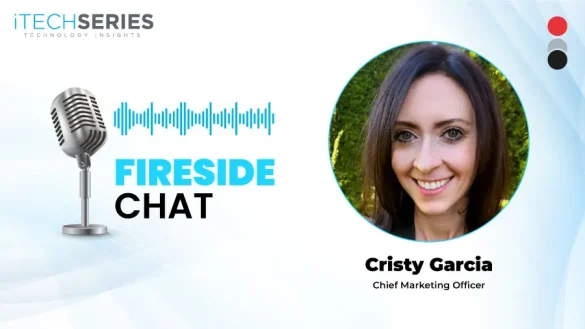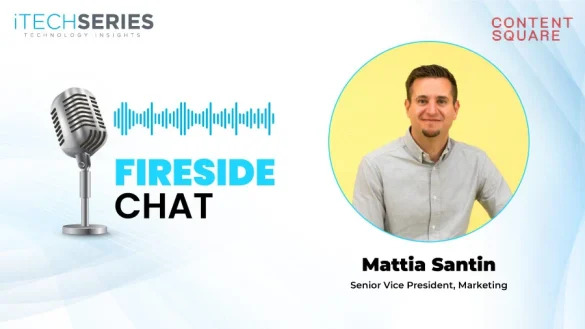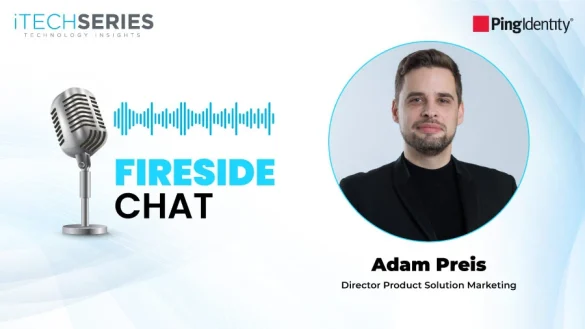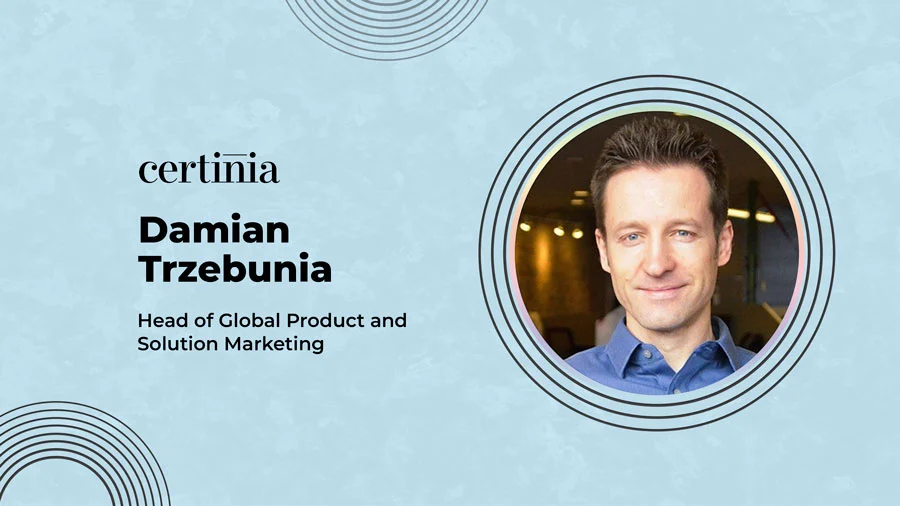Vineeta Makhija shares her journey from digital marketing enthusiast to B2B marketing leader. She discusses the evolution of ABM, the role of data and AI in driving revenue, and how aligning marketing with sales fosters impactful, customer-centric go-to-market strategies.
Vineeta, it’s a pleasure to have you for this interview. Could you tell us about yourself and your marketing journey so far?
Pleasure to be a part of the iTech Series, and thank you for having me! I’ve always had a deep passion for marketing, so much so that people around me started calling me the “marketing girl” long before I officially stepped into the industry. Even before my career began, I found myself naturally exploring the world of social media. I was an early adopter of Twitter and became so involved that I ended up securing MICE (Meetings, Incentives, Conferences, and Exhibitions) events for my cousin’s travel agency, bringing in significant revenue just through organic networking and digital outreach. That early win made me realize that digital marketing was more than a passion; it could be a powerful career path. I started my formal journey by helping scale my father’s export-import business through Google Search Ads, email marketing, and other digital channels. From there, my path became global. I had the opportunity to live and work in Thailand, the UAE, and now I’m back in India, where I’ve worked with a range of organizations—from agencies and startups to large MNCs like Simplilearn, SAP, Mphasis, and Autodesk. Over the years, I’ve gained experience across both B2B and B2C marketing landscapes. And while I’ve enjoyed both, I’ve found my true calling in B2B marketing, especially after joining Autodesk. I love the strategic depth, the alignment with sales, and the creativity that goes into building meaningful customer relationships at scale.
How has account-based marketing (ABM) evolved from a concept into a critical business strategy?
ABM has truly evolved from being just a marketing buzzword to becoming a critical business strategy that aligns marketing, sales, and customer success around shared goals. Initially, many saw ABM as a tactic to personalize content for a few high-value accounts. But today, it’s much more than that. It’s about deeply understanding your total addressable market (TAM), defining your ideal customer profiles (ICPs), and using account intelligence and intent signals to prioritize accounts that are most likely to engage and convert. If you treat ABM as just another campaign approach, it’s easy to fall back into the old spray-and-pray mindset, targeting everyone and hoping something sticks. But successful ABM requires discipline. It demands marketers to dig deep into market insights, understand account needs at a granular level, and tailor outreach accordingly. What makes it truly strategic is how it helps build stronger relationships, accelerates deal velocity, and drives higher ROI. ABM shifts the focus from leads to accounts-from volume to value. That’s why organizations across industries are embedding it at the core of their go-to-market efforts.
“ABM has truly evolved from being just a marketing buzzword to becoming a critical business strategy that aligns marketing, sales, and customer success around shared goals.”
In the overall go-to-market strategy, how has marketing’s role shaped up with increased synergy among the revenue teams?
To be honest, marketing has always contributed to revenue, whether it’s through a compelling social post, a well-placed banner ad, or a thoughtfully crafted email. Every touchpoint plays a role. The difference now is that we finally have the tools and attribution models to prove it. With better data and more advanced tech stacks, marketing’s impact on the pipeline is no longer a black box. We can now directly link our efforts to influence, engagement, and revenue outcomes-which makes it easier to scale what’s working. In today’s go-to-market motion, marketing, sales, and revenue teams are more integrated than ever. Especially in account-based marketing, where insights are everything-understanding the market landscape, buyer intent, ICP signals, and account behavior helps us equip sales with powerful conversation starters. It could be something as specific as a recent product launch the account is promoting, a shift in their hiring trends, or even a pain point that’s common across their industry. These insights help sales enter with context, and context is what builds credibility and leads to meaningful conversations. And meaningful conversations? They open doors and close deals. That’s the real synergy, when marketing doesn’t just drive awareness but actually enables sales to win.
How do you integrate account-based advertising (ABA) into your broader ABM strategy for maximum impact?
Account-based advertising (ABA) can be incredibly powerful when integrated smartly into an ABM strategy, but it also comes with its own set of challenges. One of the key hurdles is platform compatibility. Not all ad platforms support account-level targeting; many are still limited to contact-based uploads. That’s why it’s critical to choose the right tools; platforms like LinkedIn or demand-side platforms (DSPs) that allow for company-level targeting can really move the needle when used effectively. The real impact of ABA lies in how well it’s aligned with your ICP, industry, and account research. Before launching any campaign, I prioritize identifying which accounts are in-market and showing intent. This is where tools like Bombora come into play, helping us uncover what topics those accounts are actively researching. We then use those insights to tailor content, messaging, and creatives that resonate specifically with the buyer’s stage in the funnel. Accounts showing buying signals are served more bottom-funnel, conversion-driven content, while those not yet ready can be nurtured with educational or awareness-stage material. To make this really work, I follow a full-funnel, dynamic approach, where audiences move automatically from awareness to consideration to conversion as their intent evolves. It’s not just about reach; it’s about relevance and timing. When ABA is executed this way with the right data, platforms, and strategy, it doesn’t just drive impressions; it drives outcomes.
Tell us about your most challenging, yet rewarding, marketing campaign experience.
One of the most challenging, yet incredibly rewarding, campaigns I worked on was a 1: Few ABM campaign for the India market. What made it challenging was the unique buyer behavior in this region. Unlike some markets like Singapore, where a highly personalized LinkedIn Conversation Ad might lead directly to sales engagement, or EMEA where digital nurturing might drive conversions, the Indian audience tends to behave differently. They are highly engaged, interacting with ads, attending hosted events, and exploring offerings, but this doesn’t always translate to purchase intent. Many are in exploration mode, not yet ready to buy. Despite having strong account intelligence and well-crafted messaging, I noticed the conversion rate was stuck at a low 8%. That’s when I decided to pivot the strategy. I created separate clusters for these accounts, segmenting them based on industry and buying behavior, and built two different value propositions for each cluster. The messaging was adapted accordingly, more tailored, more contextual. I also made a conscious decision not to invite accounts to physical events unless they showed clear intent signals. For those who were in-market, I ran interviews and surveys to understand what solutions they were evaluating. That insight allowed me to create highly specific content assets that addressed their exact concerns and needs. This approach paid off; the conversion rate jumped from 8% to 32%. It was a perfect example of how understanding local nuances, respecting buyer readiness, and personalizing across the funnel can truly elevate ABM performance.
How do you leverage data and analytics to refine and optimize your ABM programs?
Data is the heartbeat of any successful ABM program. No matter what CRM you use, the key is to constantly track, analyze, and align your efforts to identify Marketing Qualified Accounts (MQAs) and the right buying groups within them. It starts with ensuring that the accounts engaging with your content actually match your Ideal Customer Profile (ICP). From there, I look for meaningful engagement signals, what content they’re consuming, which pages they’re visiting, and if there are any hand-raising moments like demo requests or event sign-ups. I also rely heavily on both first-party and third-party data. First-party data gives insight into what’s working within our own ecosystem, such as which campaigns are driving engagement or pipeline. Third-party data, on the other hand, helps uncover what the accounts are doing outside our ecosystem, what topics they’re researching, what vendors they’re comparing, and where their interests lie. Bringing these data sources together helps me continuously refine targeting, personalize messaging, and optimize budget allocation. In ABM, it’s not just about reach; it’s about relevance, timing, and precision. And that can only happen when you’re deeply tuned into the data.
Out of the three Rs of ABM (Reputation, Relationship, and Revenue), which one is the most challenging to track?
Thanks to a strong tech stack, tracking revenue has become more straightforward. With proper attribution models, we can see exactly which marketing efforts contributed to pipeline and closed-won deals. When it comes to relationships, I leverage a self-made relationship barometer table that shows the current level of engagement, which solutions an account is evaluating, how sales conversations are progressing, and even why certain deals were lost. These touchpoints help us assess the depth and quality of our connections within the buying committee.
But reputation, now that’s the trickiest of the three to measure. It’s a long-term play with subtle, often unquantifiable signals. You can’t spike reputation overnight, and it’s difficult to pinpoint exactly when a decision-maker shifts from “never heard of them” to “maybe we should take a look.” That said, I try to track reputation through proxy metrics like share of voice compared to competitors. Branded search lift, Content impressions, sentiment analysis, and time spent on thought leadership or high-value content. While these don’t tell the full story, they offer clues about how the brand is being perceived and whether trust is building over time. In ABM, reputation lays the foundation for relationships and revenue, so even if it’s hard to measure, it’s vital to invest in.
How can AI enhance ABM strategies while complementing, rather than replacing, strategic execution?
AI can be a powerful accelerator for ABM when used wisely. It excels at handling repetitive, time-consuming tasks like researching account insights, pulling firmographic data (like revenue or hiring trends), and monitoring intent signals across various platforms. Instead of manually navigating multiple tools, AI can aggregate and surface this data quickly, giving marketers more time to focus on what really matters-strategy and creativity. Where AI truly shines is in helping identify patterns, prioritize accounts based on predictive models, personalize at scale, and surface opportunities faster. But while AI can offer the “what” and “when,” it’s still up to marketers to define the “why” and “how.” In other words, AI should complement strategic thinking, not replace it. It can guide decisions, but the human touch is still essential for interpreting nuance, crafting compelling narratives, and building authentic relationships. The most successful ABM strategies are the ones where AI and human expertise work hand-in-hand, tech for scale, humans for strategy.
What would be your advice to aspiring marketers looking to make their mark?
Marketing is one of the most dynamic and exciting fields out there, but that also means it’s constantly evolving. One day, digital ads might be your top-performing channel. The next cold email might completely fall flat. That’s the nature of the game. So, my first piece of advice is: always stay curious and adaptable. Trends change, algorithms shift and platforms rise and fall, but the marketers who thrive are the ones who keep learning, experimenting, and evolving. Secondly, know your audience inside and out. Understand where they’re from, which platforms they spend time on, how they behave online, and what truly resonates with them. Country-specific behavior, cultural context, and historical data all play a huge role in shaping successful campaigns. Also, whether you’re in B2B or B2C, remember that the audiences, the buying cycles, and the expectations are very different. There’s no one-size-fits-all strategy. The key is to customize your approach based on what works best for your specific audience segment. Lastly, don’t just follow trends; try to understand the “why” behind them. That mindset shift will help you go from being a doer to becoming a strategic marketer.
About Vineeta Makhija
Vineeta Makhija is a seasoned digital marketer specializing in account-based marketing (ABM) and account-based advertising (ABA). With expertise in 1:1, 1:Few, and 1:Many ABM frameworks, she has successfully implemented strategies across diverse industries and global markets. Passionate about driving revenue growth, Vineeta leverages data-driven insights to accelerate pipeline growth, enhance customer retention, and deliver impactful marketing campaigns that align with business objectives.











